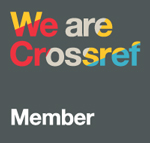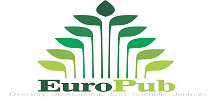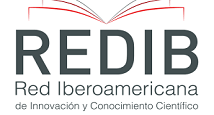Fologram tool to improve spatial skills in Interior Architecture students
DOI:
https://doi.org/10.51440/unsch.revistaeducacion.2023.22.474Keywords:
fologram tool, learning, spatial ability, rhinoceros, grasshopper, mixed realityAbstract
The objective of this article was to demonstrate the effects of the application of the fologram tool on the spatial abilities of the students of Interior Architecture of the Toulouse Lautrec School of Higher Education, the methodology had a quasi-experimental design and the type of applied research, the sampling It was not probabilistic, the sample was made up of 32 students, who made up the experimental and control group, the technique used was the survey and a questionnaire was applied for the pre and post-test, for the experiment sessions were developed using the fologram tool, since This software helped students to understand, manipulate data so that they can visualize and distinguish objects in two and three dimensions. Regarding the result, a significance of 0.001 was obtained, which indicated that the application of the augmented reality software fologram has effects on the improvement of the spatial ability of Toulouse Lautrec students, since it allowed them to consolidate the construction of spatial ability.
Downloads
References
Alabau-Tejada, N. (2021). Virtual reality, video games and in-game advertising: An experimental study in the adolescent group with business implications for the entertainment industry. Revista Prisma social, 3(34), 107-123. https://revistaprismasocial.es/article/view/4359/5011
Andrade-Molina, M. y Montecino, A. (2011, 30 of june). The problem of three-dimensionality and its representation in the plane. [main speech]. XIII CIAEM-IACME, Recife, Brazil.
Blázquez, A. (2017). Augmented reality in education. https://oa.upm.es/45985/1/Realidad_Aumentada__Educacion.pdf
Bower, M., Howe, C., McCredie, N., Robinson, A. & Grover, D. (2014) Augmented Reality in education – cases, places and potentials, Educational Media International, 51(1), 1-15. DOI: 10.1080/09523987.2014.889400
Bustos, A. y Coll, C. (2010). Virtual environments as teaching and learning spaces. A psychoeducational perspective for its characterization and analysis. Revista Mexicana de Investigación Educativa, 15(44), 163-184. https://www.redalyc.org/articulo.oa?id=14012513009
Cabero-Almenara, J., & Palacios-Rodríguez, A. (2021). La evaluación de la educación virtual: las e-actividades. RIED-Revista iberoamericana de educación a distancia, 24(2), 169–188. https://doi.org/10.5944/ried.24.2.28994
Calderón Uribe, F. (2015). Augmented reality applied to the teaching of descriptive geometry. Revista AUS, 1(18), 18-22. https://onx.la/e610c
Castellaro, M. (2011). El concepto de representación mental como fundamento epistemológico de la psicología. Límite. Revista Interdisciplinaria de Filosofía y Psicología, 6(24), 55-67. https://www.redalyc.org/articulo.oa?id=83622474005
Carceller, I. (2020). La realidad aumentada como herramienta de Enriquecimiento del proceso de aprendizaje. Edetania 56(6),169-184. https://doi.org/10.46583/edetania_2019.56.472
Cárdenas, H. A.; Mesa, F. Y. y Suárez, M.J. (2018). Realidad aumentada (RA): aplicaciones y desafíos para su uso en el aula de clase. Educación y ciudad, 35, 137-148. https://dialnet.unirioja.es/descarga/articulo/6702429.pdf
Cruz, A. y Ramírez, R. (2019). Componentes del sentido espacial en un test de Capacidad espacial. Gijón: SEIEM. http://funes.uniandes.edu.co/13808/1/Cruz2018Componentes.pdf
Del Cerro, F. y Morales, G. (2017). Realidad aumentada como herramienta de mejora de la inteligencia espacial en estudiantes de educación secundaria. ROJO. Revista de Educación a distancia, 18(54), 1-14. https://www.redalyc.org/articulo.oa?id=54751771005
Flores, P., Ramírez, R. y Del Río, A. (2015). Sentido espacial. Pirámide.
Hernández-Sampieri, R. & Mendoza, C. P. (2018). Metodología de la investigación. Las rutas cuantitativa, cualitativa y mixta. (6ta ed.). Ediciones Mc Graw Hill
Laurens, L. A. (2019). Realidad aumentada: propuesta metodológica para la didáctica de diseño industrial en el ámbito Universitario. Revista científica electrónica de Educación y Comunicación en la Sociedad del Conocimiento, 19(2), 135-154. https://dialnet.unirioja.es/descarga/articulo/7183646.pdf
Lekue, P. (2008). Habilidades espaciales en la interpretación de mensajes visuales. Ikastorratza, e- Revista de Didáctica, 2. http://www.ehu.es/ikastorratza/2_alea/habilidades.pdf (issn: 1988-5911).
Luque, J. (2020). Realidad virtual y realidad aumentada. Revista digital de Acta, (1), pp. 1-19. https://www.acta.es/recursos/revista-digital-manuales-formativos.616-063
Maris, S. y Noriega, M. (2011). Razonamiento espacial y rendimiento académico. Interdisciplinaria, 28(1), 145-158. https://www.redalyc.org/pdf/180/18022327009.pdf
Mato, M. & Martin, J. (2015). Spatial skills and gender. Analysis and development in engineering degree students at the University of Las Palmas de Gran Canaria. [Doctoral thesis, University of Las Palmas de Gran Canaria]. https://accedacris.ulpgc.es/bitstream/10553/19819/4/0730065_00000_0000.pdf
Minedu (2013). Elaboración y validación de instrumentos de Evaluación de competencias profesionales. Minedu.
Múzquiz, M. (2017). La experiencia sensorial de la Arquitectura. Desde la supremacía de la visión hacia la experiencia corpórea y emocional. https://oa.upm.es/47578/1/TFG_Muzquiz_Ferrer_Mercedes.pdf
Serrano, A., Ramírez, R. y Flores, P. (2018). El sentido espacial sobre traslaciones en un libro de texto. Números, 98(2), 117.131. http://funes.uniandes.edu.co/12890/1/Serrano2018El.pdf
Suárez, J., Maíz, F., & Meza, M. (2010). Multiple intelligences: a pedagogical innovation to enhance the teaching-learning process. Investigación y Postgrado, 25(1), 81-94.
Downloads
Published
How to Cite
License
Copyright (c) 2023 Alicia Chávez

This work is licensed under a Creative Commons Attribution-NonCommercial 4.0 International License.





















